Shopping Cart
Remove All Your shopping cart is currently empty
Your shopping cart is currently empty
Anti-Cathepsin D Antibody (4I539) is a Rabbit antibody targeting Cathepsin D. Anti-Cathepsin D Antibody (4I539) can be used in FCM,ICC,IHC,IP,WB.
| Pack Size | Price | USA Warehouse | Global Warehouse | Quantity |
|---|---|---|---|---|
| 50 μL | $297 | 7-10 days | 7-10 days | |
| 100 μL | $498 | 7-10 days | 7-10 days |
| Description | Anti-Cathepsin D Antibody (4I539) is a Rabbit antibody targeting Cathepsin D. Anti-Cathepsin D Antibody (4I539) can be used in FCM,ICC,IHC,IP,WB. |
| Synonyms | CD, cathepsin D, CatD |
| Ig Type | IgG |
| Clone | 4I539 |
| Reactivity | Human,Mouse |
| Verified Activity | 1. Western blot analysis of Cathepsin D on MCF-7 lysates using anti-Cathepsin D antibody at 1/1,000 dilution. 2. Immunohistochemical analysis of paraffin-embedded human lung tissue using anti-Cathepsin D antibody. Counter stained with hematoxylin. 3. Immunohistochemical analysis of paraffin-embedded human liver tissue using anti-Cathepsin D antibody. Counter stained with hematoxylin. 4. Immunohistochemical analysis of paraffin-embedded human breast carcinoma tissue using anti-Cathepsin D antibody. Counter stained with hematoxylin. 5. Immunohistochemical analysis of paraffin-embedded human gastric cancer tissue using anti-Cathepsin D antibody. Counter stained with hematoxylin. 6. Immunohistochemical analysis of paraffin-embedded human pancreas tissue using anti-Cathepsin D antibody. Counter stained with hematoxylin. 7. Immunohistochemical analysis of paraffin-embedded mouse prostate tissue using anti-Cathepsin D antibody. Counter stained with hematoxylin. 8. ICC staining Cathepsin D in PANC-1 cells (green). The nuclear counter stain is DAPI (blue). Cells were fixed in paraformaldehyde, permeabilised with 0.25% Triton X100/PBS. 9. ICC staining Cathepsin D in AGS cells (green). The nuclear counter stain is DAPI (blue). Cells were fixed in paraformaldehyde, permeabilised with 0.25% Triton X100/PBS. 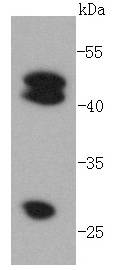 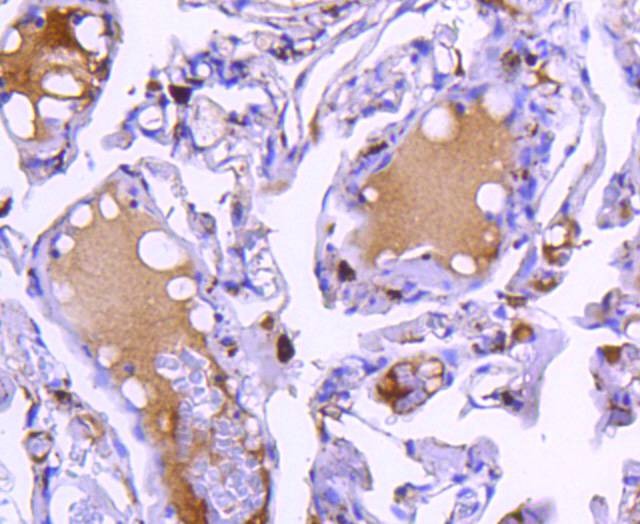 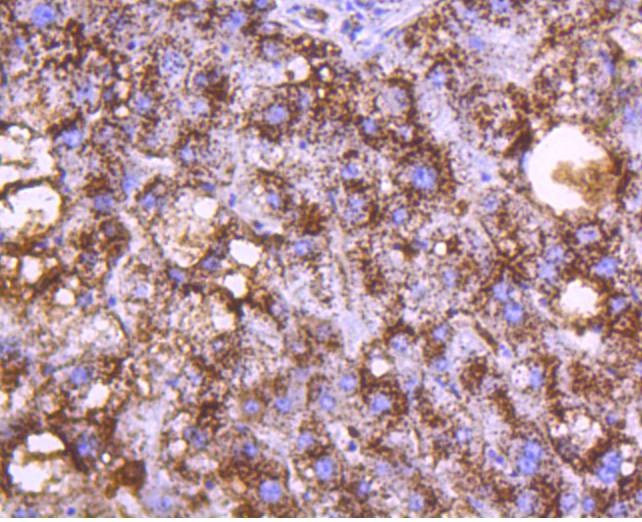 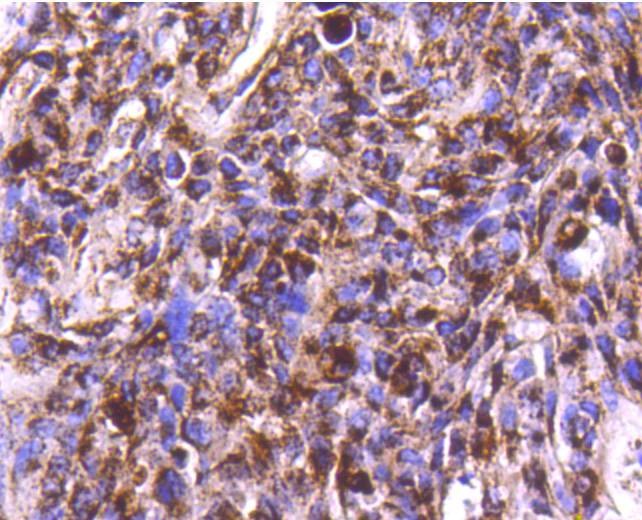 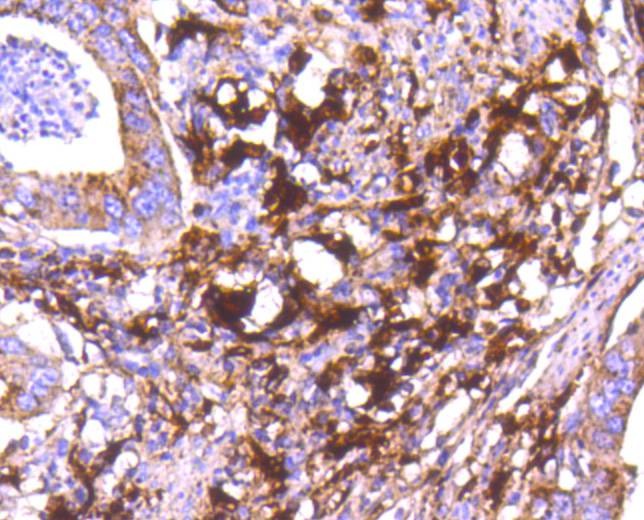 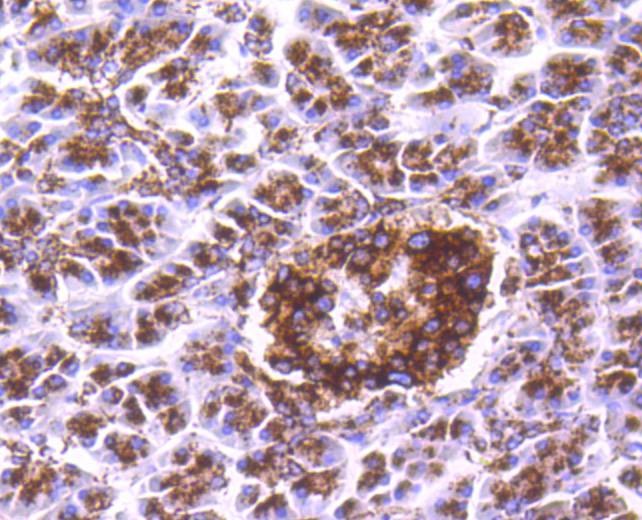 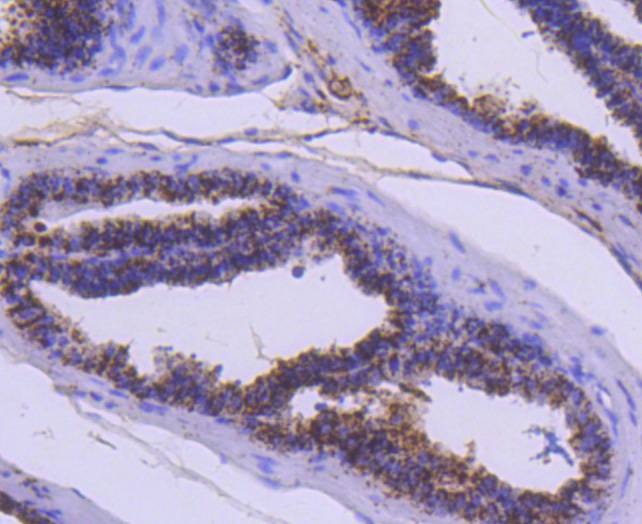  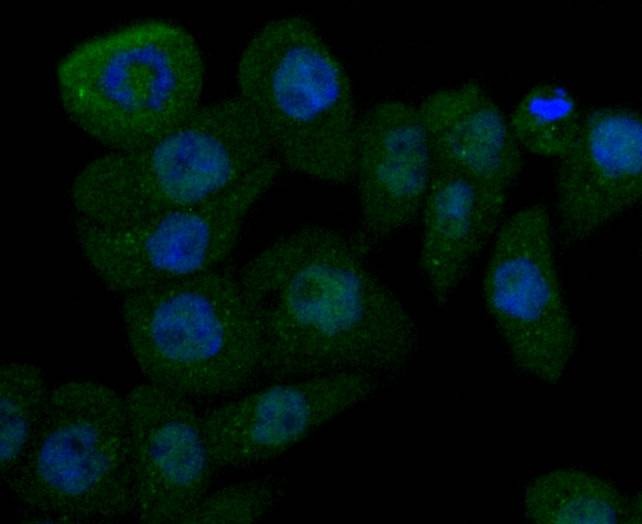 |
| Application | |
| Recommended Dose | WB: 1:1000-2000; IHC: 1:100-500; ICC: 1:100-500; FCM: 1:10-100 |
| Antibody Type | Monoclonal |
| Host Species | Rabbit |
| Construction | Recombinant Antibody |
| Purification | ProA affinity purified |
| Appearance | Liquid |
| Formulation | 1*TBS (pH7.4), 1%BSA, 40%Glycerol. Preservative: 0.05% Sodium Azide. |
| Research Background | The cathepsin family of proteolytic enzymes contains several diverse classes of proteases. The cysteine protease class comprises cathepsins B, L, H, K, S, and O. The aspartyl protease class is composed of cathepsins D and E. Cathepsin G is in the serine protease class. Most cathepsins are lysosomal and each is involved in cellular metabolism, participating in various events such as peptide biosynthesis and protein degradation. Cathepsins may also cleave some protein precursors, thereby releasing regulatory peptides. The promoter region of the cathepsin D gene contains five Sp1 binding sites and four AP-2 binding sites. |
| Conjucates | Unconjugated |
| Immunogen | Recombinant Protein |
| Uniprot ID |
| Molecular Weight | Theoretical: 28/43/46 kDa. |
| Stability & Storage | Store at -20°C or -80°C for 12 months. Avoid repeated freeze-thaw cycles. |
| Transport | Shipping with blue ice. |
| Size | Quantity | Unit Price | Amount | Operation |
|---|

Copyright © 2015-2025 TargetMol Chemicals Inc. All Rights Reserved.